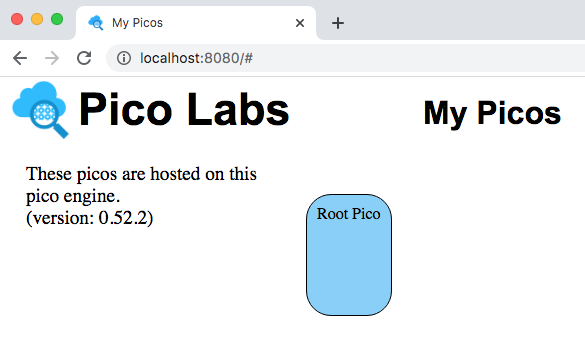
This page will guide you through the steps necessary to obtain and operate your own Kinetic Rules Engine (KRE).
After completing this Quickstart lesson, you will:
*This section is copied verbatim from Quickstart (the one for the original KRE system)
Getting started with KRL can be a big leap because there are so many things that are different about programming in KRL:
The result of these properties is a programming model that more closely resembles programming cloud-based persistent objects than anything else. We call these persistent computational objects "picos".
KRL is executed by your instance of the node pico-engine, an open-source, cloud-based rule processing system. All of the properties listed above are present in any KRE system.
To be executed, a ruleset must be
To complete the Quickstart, you will need
Prerequisite: you will need to install node (also known as Node.js) on your machine. It includes npm, the node package manager.
$ npm install -g pico-engine $ PORT=8084 pico-engine http://localhost:8084 |
In the example above, port number 8084 was chosen. By default, if you run the command `pico-engine` without setting the environment variable, port 8080 will be used. The node pico engine will spend some time initializing internal data structures before it starts its web server.
When you first run the node pico-engine, it does some initialization work, which may take some time. After doing this, it starts a web server on the port you selected, if any, or on port 8080.
Note that the web server displays the URL of its document root, ex. "http://localhost:8084" and then continues to run. As we will see later, messages will be logged to this console.
During the pico engine initialization, it creates a primary pico, naming it "Owner Pico" and then registers and installs two rulesets. These are the minimum required for running the pico and the developer UI. You can visit the developer UI at the address on which the pico engine is listening. From there you will have a link to the main developer UI page, "My Picos":

Your owner pico is represented by a rounded rectangle, which is placed on a canvas, allowing you to change its placement.
Do the following:
git repo for your KRL rulesets and put it on Github. You can create a different repo for each ruleset if you like or create one repo and put multiple rulesets in it. Create file in your ruleset repo called hello.krl and put the code below into it.
A first ruleset, in a file named hello.krl:
ruleset hello_world {
meta {
name "Hello World"
description <<
A first ruleset for the Quickstart
>>
author "Phil Windley"
logging on
shares hello
}
global {
hello = function(obj) {
msg = "Hello " + obj;
msg
}
}
rule hello_world {
select when echo hello
send_directive("say") with
something = "Hello World"
}
} |
To validate, open the "Engine Rulesets" page (linked from the "Pico Bootstrap" page), and paste the ruleset above into the big text area, and click the "validate" button. When your KRL compiles correctly, you will see a result of "ok" beneath the buttons, with the page looking like this screenshot.
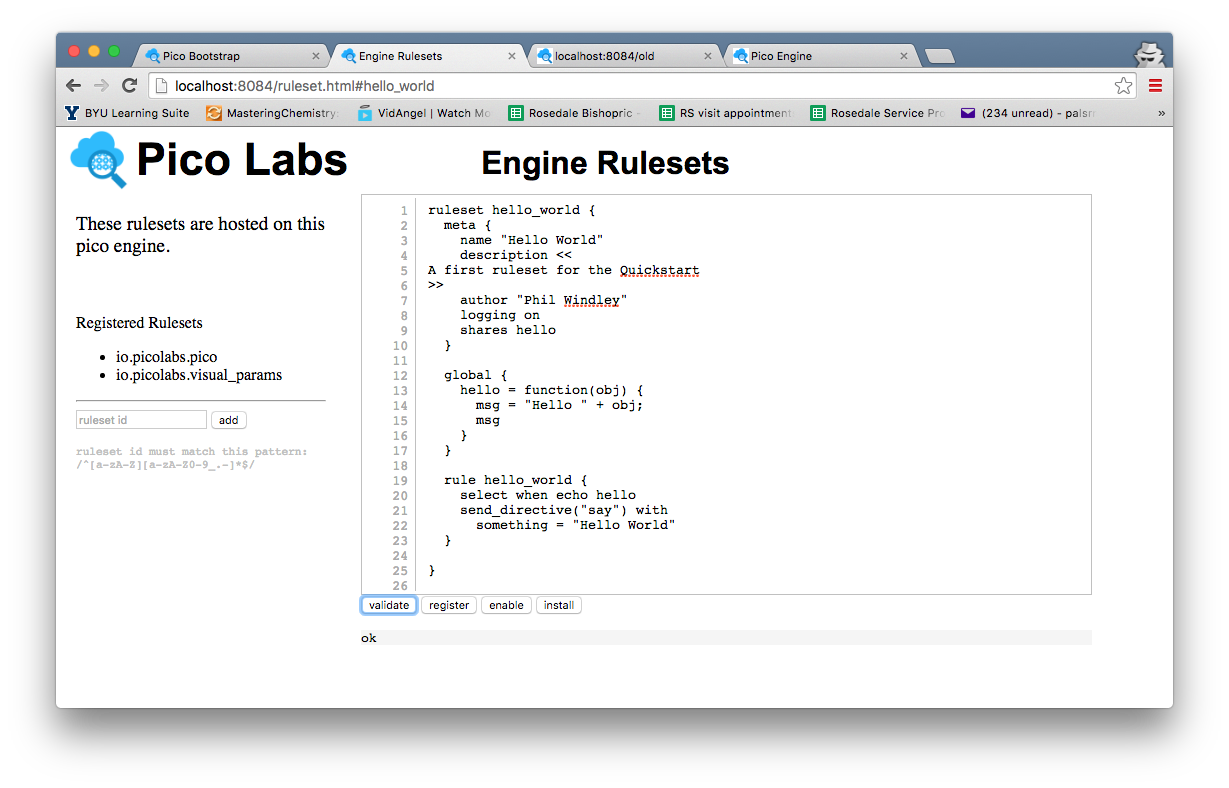
Hint: The editor in the "Engine Rulesets" page is very primitive and does not include a "save to disk" option. You should also save your ruleset somewhere in your file system (or in a repository), named, say "hello_world.krl" |
Click on the "register" button, and then your page will look like this screenshot.
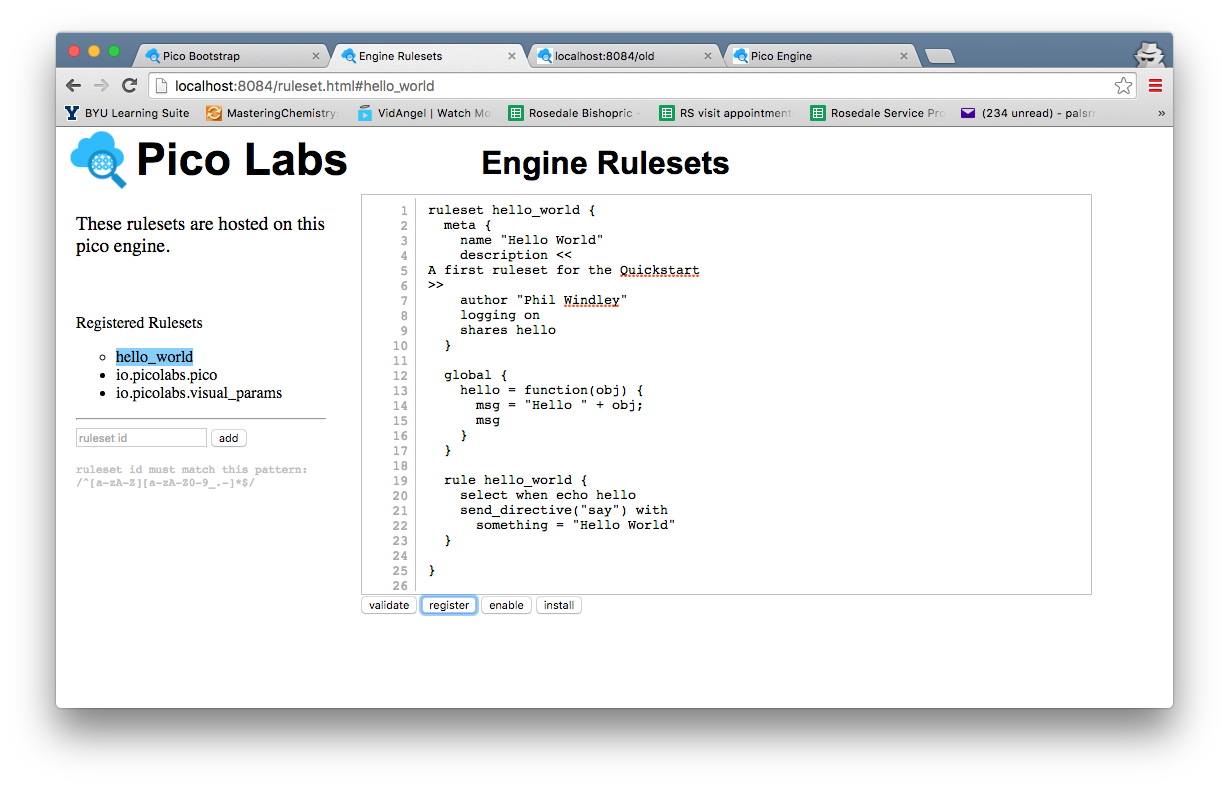
Your ruleset is now registered with the node pico-engine, and its name is highlighted in the list of registered rulesets. Notice the circle beside the ruleset name. This indicates that the source code has been registered with the pico-engine, but is not yet enabled. Click on the "enable" button to take care of this.
Finally, click on the "install" button. This causes the pico-engine to compile the KRL and cache the compiled version in a rulesets folder. Once this has been done, the ruleset can be added to picos.
So far, you have installed the ruleset into your pico-engine. But it can't run unless it has been added to a pico.
Adding a ruleset to a pico is properly a user function, but as a developer, you are functioning in both user and developer capacities.
View your Owner Pico by visiting the "My Picos" page (linked from the "Pico Bootstrap" page).

Your owner pico is represented by a rounded rectangle, which is placed on a canvas, allowing you to change its placement.
Click on the rounded rectangle, on your Owner Pico. It expands giving you access to information about it.
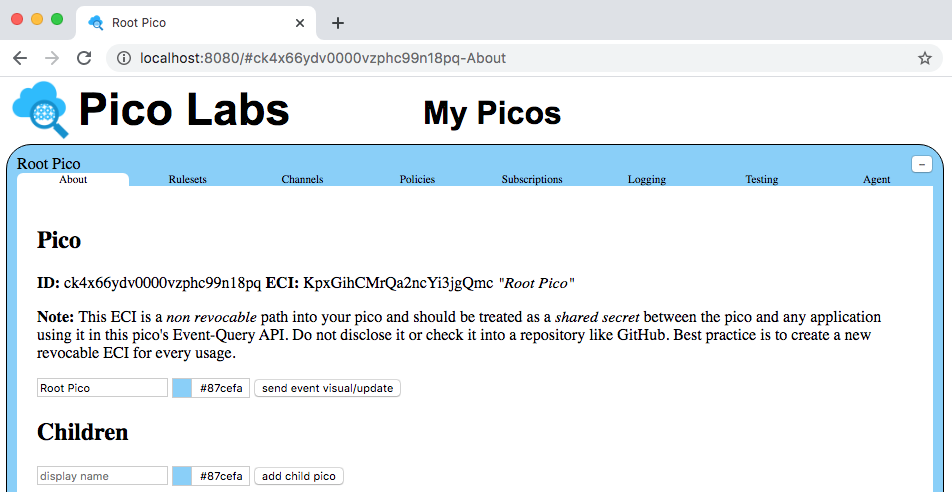
The "About" tab will be used in subsequent lessons.
Click on the "Rulesets" tab.
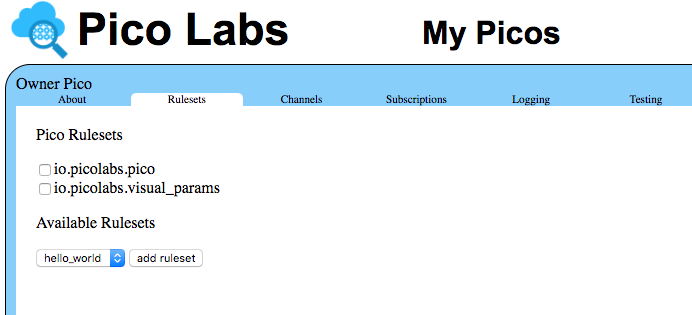
Notice that the name of your ruleset is mentioned in a drop-down list of available rulesets. Click the "add ruleset" button to add the ruleset to your pico.
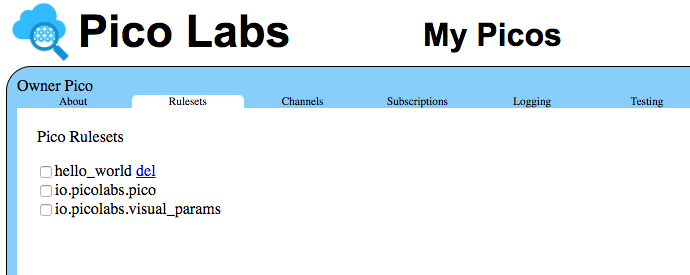
Notice that you are allowed to delete the ruleset from the pico.
Having completed this quickstart, you should continue with Lesson 1. Events and Queries